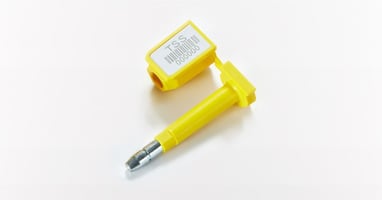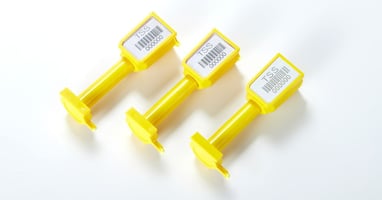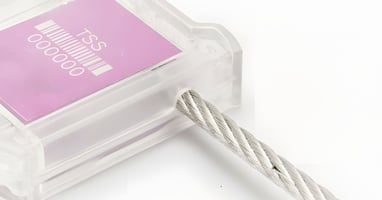Premium bolt seals are an exceptional upgrade from standard sealing solutions. They offer enhanced...
Benefits of Cable Seals Over Traditional Locking Mechanisms

Your organization depends on secure, reliable protection for valuable assets, equipment, and inventory. Though traditional padlocks and mechanical locking mechanisms have served industries for decades, evolving security threats and operational demands require more sophisticated solutions. Fortunately, cable seals offer better security, operational efficiency, and cost-effectiveness than traditional locks.
Understanding the benefits of cable seals over traditional locking mechanisms will help you make informed decisions about your security infrastructure. With this comprehensive guide, you’ll learn how cable seals outperform conventional locks across multiple factors that directly impact your bottom line.
Enhanced Security Features
Cable seals provide an unmatched level of security. Follow along to learn how their specialized design and features work to protect your assets against unauthorized access and theft.
Tamper-Evident Design
Unlike traditional locks that can be compromised without obvious signs, cable seals clearly indicate when someone has attempted unauthorized access. This tamper-evident feature proves invaluable for maintaining chain-of-custody documentation and identifying security breaches.
Padlocks might not show evidence of tampering. This gives skilled individuals the opportunity to pick locks, duplicate keys, or manipulate mechanisms without leaving obvious traces. If you rely on these mechanisms, you may never know your security has been compromised until inventory discrepancies emerge or valuable equipment disappears.
Unique Identification Systems
Traditional locks use generic keys or combination systems that multiple people can access. Shared access model creates security vulnerabilities and makes it difficult to trace who accessed secured areas or equipment.
Modern cable seals incorporate sequential numbering, barcoding, and radio-frequency identification (RFID) technology for precise tracking. Each seal carries a unique identifier that enables comprehensive audit trails and accountability systems. To create detailed security documentation, you can track exactly when and where each seal was applied.
Cut-Resistant Construction
Many high-quality cable seals feature multi-strand steel cables with specialized coatings to prevent cutting attempts. The cable construction requires specialized tools and significant time to breach, creating strong deterrence against opportunistic theft.
On the other hand, standard padlocks present single points of failure. Once someone defeats the locking mechanism through picking, key duplication, or physical destruction, the entire security system fails. The concentrated stress points in traditional locks make them vulnerable to targeted attacks.

Operational Efficiency Advantages
Operational efficiency can streamline processes and reduce wasted resources. By implementing advanced security measures, you can optimize workflows while maintaining protection.
Simplified Key Management
Cable seals eliminate complex key management systems entirely. You never need to worry about lost keys, unauthorized key duplication, or changing locks when personnel leave your organization. This streamlined approach reduces administrative overhead and security risks associated with physical key distribution.
Conversely, traditional lock systems require extensive key management protocols—to maintain security, you must track key distribution, implement key control procedures, and regularly rekey locks. These administrative requirements consume time and resources while creating opportunities for security lapses.
Faster Implementation
Installing cable seals requires minimal time and no special tools. Personnel can quickly secure equipment, containers, or access points without complicated setup procedures. In time-sensitive operations or emergencies, this rapid deployment capability proves especially valuable.
Traditional locks require the installation of mounting hardware, precise alignment, and ongoing maintenance. This time-consuming installation process may also require specialized tools or potentially expensive professional installation services.
Reduced Maintenance Requirements
Cable seals function as single-use security devices that don’t require ongoing maintenance. Once applied, they provide reliable security until intentionally removed. This maintenance-free operation eliminates ongoing costs and reduces the likelihood of security failures due to mechanical wear.
Traditional locks require regular maintenance, lubrication, and eventual replacement as mechanical components wear out. Weather exposure, repeated use, and time degrade lock performance while creating security vulnerabilities and maintenance expenses.
Cost-Effectiveness Analysis
Evaluating cost-effectiveness involves comparing the long-term expenses and benefits of different security solutions. Keep reading for a detailed assessment of how maintenance-free technologies outperform traditional locks in terms of economic efficiency and durability.
Lower Total Cost of Ownership
Cable seals typically cost less than high-quality traditional locks. When you factor in the elimination of key management systems, reduced maintenance requirements, and simplified replacement procedures, cable seals deliver superior value over their operational lifetime.
Traditional locks represent higher upfront costs plus ongoing expenses for keys, maintenance, and eventual replacement. Especially when accounting for administrative overhead, the total cost of ownership often exceeds cable seal costs by substantial margins.
Reduced Administrative Burden
Cable seals eliminate numerous administrative tasks associated with traditional lock systems. You and your team no longer need to maintain key inventories, track key distribution, or coordinate lock changes. This reduced administrative burden frees your personnel to focus on core business activities.
Traditional lock systems require dedicated administrative attention for key management, access control, and security protocol maintenance. These administrative requirements consume staff time and create opportunities for human error that can compromise security.
Inventory Management Benefits
Cable seals offer predictable replacement costs and simplified inventory management. You can easily calculate usage rates and maintain appropriate stock levels without complex forecasting for keys, lock components, or maintenance supplies.
Traditional locks require maintaining inventories of keys, spare locks, maintenance supplies, and replacement parts. Complex inventory management increases carrying costs and creates supply chain dependencies that can negatively affect operations.

Industry-Specific Applications
Industry-specific applications of locking systems demonstrate how tailored solutions can address unique security and operational challenges across various sectors.
Manufacturing Operations
Manufacturers benefit from securing equipment, control panels, and restricted areas with cable seals. Plus, the tamper-evident features maintain quality control and prevent unauthorized modifications to equipment.
Distribution Centers
Distribution operators utilize cable seals for container security, trailer sealing, and high-value inventory protection. The unique identification features integrate seamlessly with warehouse management systems and provide comprehensive tracking capabilities.
Agricultural Operations
Many agricultural professionals rely on cable seals to secure equipment, chemical storage areas, and processing facilities. The weather-resistant materials perform reliably in outdoor environments where traditional locks might fail due to corrosion.
Healthcare Facilities
Healthcare organizations implement cable seals for pharmaceutical storage, equipment security, and restricted area access control. The tamper-evident features support compliance with security protocols.
Logistics Companies
Logistics operations rely on cable seals for cargo security, vehicle access control, and facility protection. While maintaining security standards, the rapid deployment capabilities support time-sensitive operations.
Making the Right Choice for Your Organization
Cable seals represent the evolution of security technology, offering countless benefits. Now that you understand the many benefits of cable seals over traditional locking mechanisms, it’s time to upgrade your security infrastructure. Reach out to Logimate today to find the best solution for your organization.




